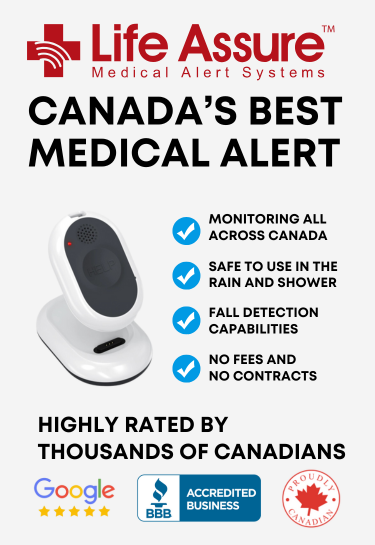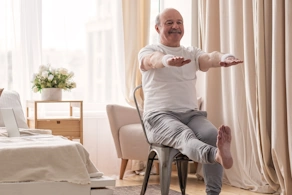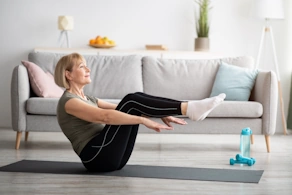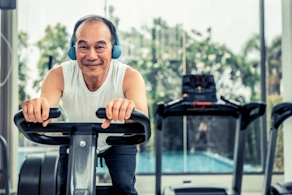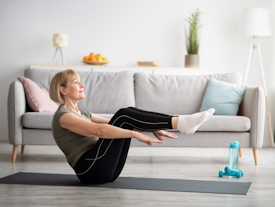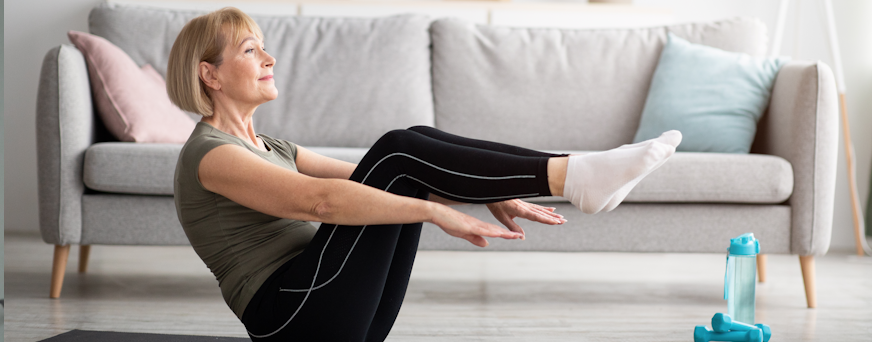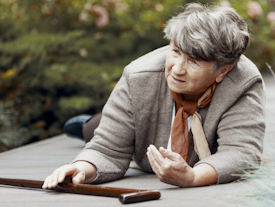Heel-To-Toe Walking: A Simple Exercise For Improving Balance In Seniors
Many people take balance for granted—until it starts to fade. For Canadian seniors, staying steady on their feet helps prevent falls, protect independence, and build everyday confidence. That's where a simple, targeted exercise called heel-to-toe walking can help.
This technique, often recommended by physiotherapists, strengthens the muscles that support balance and coordination. It's easy to learn, doesn't require special equipment, and can be practiced almost anywhere.
By improving body awareness and control, heel-to-toe walking becomes a powerful tool for everyday safety. Whether you're looking to prevent falls or feel steadier on your feet, this exercise is a small step with significant benefits.
Life Assure Product Quiz
Find The Perfect Medical Alert Device
Take our 30 second quiz and discover which Life Assure medical alert device is the right fit for you or a loved one.
Life Assure Product Quiz
Find The Perfect Medical Alert Device
Take our 30 second quiz and discover which Life Assure medical alert device is the right fit for you or a loved one.
What Is Heel-To-Toe Walking?
Heel-to-toe walking is a simple exercise that strengthens balance by improving how your body moves and adjusts with each step. The technique involves walking in a straight line, placing the heel of one foot directly in front of the toes of the other—just like walking on a tightrope.
This movement activates stabilizing muscles, coordinates motion on both sides, and improves posture. Over time, it trains your brain and body to work together more effectively, reducing the likelihood of tripping or losing footing.
For Canadian seniors, heel-to-toe walking can offer a low-impact, accessible way to build stability and confidence. It's commonly used in physical therapy programs and fall prevention routines because it targets the skills needed for safe, independent mobility.
Benefits Of Heel-to-Toe Walking For Seniors
Heel-to-toe walking helps strengthen the muscles responsible for balance and coordination, which are essential for staying mobile and independent. With regular practice, this exercise improves body awareness, making it easier to detect and respond to uneven surfaces or shifting weight.
For Canadian seniors, the benefits extend beyond balance. Heel-to-toe walking can enhance posture, increase lower-body strength, and support better joint function. These improvements translate to more confident movement and a lower risk of falling during everyday tasks.
This exercise also offers mental benefits. Focusing on each step requires concentration and encourages a stronger mind-body connection—both of which play a role in fall prevention. Over time, seniors report feeling more stable, capable, and in control of their movements.
How To Practice Heel-To-Toe Walking Safely
Practicing heel-to-toe walking safely starts with the right environment, proper technique, and support if needed. Here's how to get started:
Choosing The Right Environment
Where you practice this technique matters.
- ● Start with a flat, even surface free from clutter or obstacles
- ● Hardwood floors, hallways, or low-pile carpeted spaces are ideal
- ● Avoid practicing near stairs, slick tile, or uneven outdoor walkways, especially when first learning
- ● Make sure the area is well-lit so you can see where you're stepping and maintain awareness of your surroundings
If you feel unsteady, position yourself near a wall, countertop, or sturdy chair for light support. A safe space helps you focus on movement without worrying about hazards.
Step-By-Step Guide To Heel-To-Toe Walking
To practice heel-to-toe walking correctly, take your time and focus on posture, placement, and control.
- ● Stand tall with your arms relaxed at your sides or held out for balance
- ● Place the heel of your front foot directly in front of the toes of your back foot
- ● Shift your weight forward slowly and evenly
- ● Step forward again, placing your next heel directly in front of your toes
- ● Keep your gaze ahead—not down—to maintain posture and orientation
- ● Continue for 10–20 steps or as many as you feel comfortable with
Common mistakes to avoid:
- ● Looking down while walking
- ● Rushing the steps
- ● Taking wide or misaligned steps
- ● Practicing without support if you're unsteady
The best results are achieved at a slow, steady pace. With practice, this routine becomes more fluid and natural.
Using Support And Assistance
It's normal to need a little help when learning a new movement. Seniors uncertain about their balance should use a cane, walker, or a nearby wall for support during early practice.
If you're unsure whether heel-to-toe walking is safe for you, speak with a physiotherapist or healthcare provider first. They can help assess your balance and suggest modifications.
Caregivers and family members can also assist by standing nearby or offering a steadying hand. Having support close by makes it easier to build confidence without fear of falling.
Incorporating Heel-To-Toe Walking Into Daily Routine
The best way to build balance is to practice regularly. Start by setting aside a few minutes daily to walk heel-to-toe in a safe, familiar space. Consistency is more effective than long sessions, so even a short walk every morning or evening can make a difference.
Consider adding this exercise before your daily walk, after stretching, or during TV commercial breaks. Mark your progress by noting how many steps you take or how steady you feel.
Building a habit takes time, but staying consistent helps improve strength, confidence, and stability with each step.
Additional Tips For Maintaining Balance
Heel-to-toe walking is just one way to stay steady. Pairing it with other low-impact activities, such as tai chi, water aerobics, or chair yoga, can help improve coordination and strength.
A balanced diet also helps prevent falls. Make sure you're getting enough calcium, vitamin D, and hydration to support bone and muscle health.
Routine check-ups with your doctor, eye exams, and hearing assessments contribute to better body awareness and safer movement. Supporting your balance from multiple angles builds a stronger foundation for daily living.
Conclusion
Balance challenges can sneak up over time, but small, consistent efforts can create lasting improvements. Heel-to-toe walking offers Canadian seniors a simple, accessible way to build stability, reduce fall risk, and move more confidently.
By practicing regularly, using safe environments, and seeking support when needed, you can turn this simple exercise into a powerful part of your wellness routine.
Talk to your doctor or physiotherapist if you're unsure where to begin. They can help design a plan that fits your needs and supports your goals. Every step you take brings you closer to safer, more independent living.



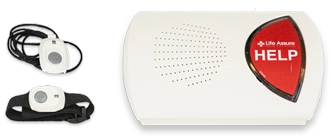


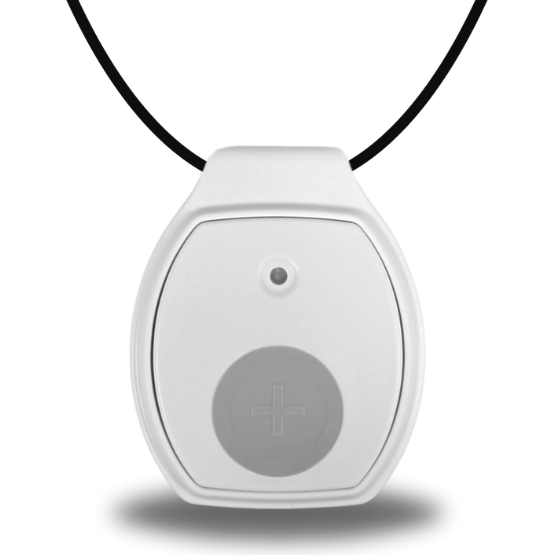


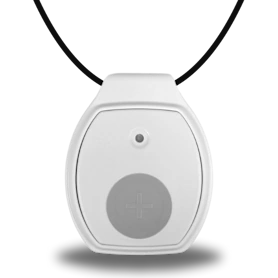

 Get Help With The Push Of A Button
Get Help With The Push Of A Button